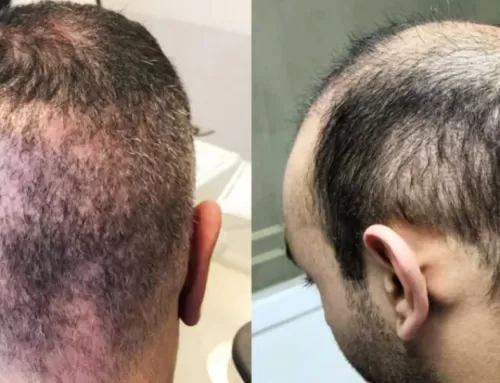Hair loss is no laughing matter to those who experience it. In fact, for some people, it can be devastating. Typically a hereditary disorder, baldness occurs when your hair follicles are super sensitive to dihydrotestosterone (DHT), a derivative of the hormone, testosterone. Because it occurs on a molecular level, treating and reversing hair loss can sometimes prove challenging, and hair transplants are often the most successful way to restore a full, healthy head of hair. At our Boston center, our experts offer advanced hair loss treatment, such as hair transplants, that maximize results while minimizing risks, including the risks of nerve damage.
Common Risks Associated with Hair Transplants
The concept behind male hair transplantation is to relocate hair follicles that aren’t DHT-sensitive to help regenerate hair growth throughout your entire scalp. Typically, the surgery involves removing follicles from dense areas of hair and transplanting them into thinning or bald areas. Usually, the hair at the back of head is more resistant to testosterone, which is why many men grow bald from the top, but retain the hair at the back. Like all surgeries, there may be some risk associated with hair transplantation, such as;
- Failure due to hair follicle death after transplantation
- Bleeding
- Scarring
- Infection
- Nerve damage
Revamping the Hair Transplant Procedure
Traditionally, surgical hair transplants involved removing relatively large skin and hair grafts and replanting them elsewhere on your scalp. When a cut is made deep enough, there may be a risk of nerve damage to the surrounding area, leading to numbness, and in some instance, debilitating pain. We provide a wealth of non-surgical options to help restore your lost hair, including Rogaine®, Propecia®, Platelet Rich Plasma (PRP) procedures, and stem cell therapy. For patients who require hair transplant surgery, we also offer innovative micro grafts and mini grafts that can produce amazing results without leaving noticeable scarring, or requiring a deep transection.
What Is Follicular Unit Extraction?
Follicular Unit Extraction, or FUE, describes the process of taking hair follicles directly from the donor area and transplanting them using an extremely small (less than a diameter) circular device. The device can remove individual hair follicle units, and then transplant them, without the need to relocate strips or grafts of skin and hair. By minimizing the size of the graft units, we can significantly decrease your risks of complications. Typical candidates for FUE include patients who;
- Have lost a significant amount of hair, and surgery is the best option, but wish for the least-invasive method to restore a full head of hair.
- Have not responded satisfactorily to non-surgical treatments
- Have tried follicular unit transplants, but to no avail
- Wish for a minimally invasive method that leaves little or no visible scarring
Learn More about Innovative Hair Loss Treatment
Though hair loss is hereditary, it doesn’t have to be inevitable. If you’re tired of wishing you could do something to stop balding, then contact our office at your earliest convenience to schedule a consultation with our hair loss and treatment experts.






